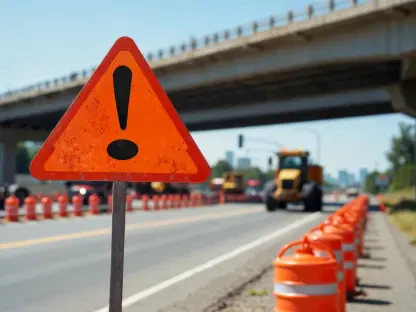I’m thrilled to sit down with Donald Gainsborough, a political savant and leader in policy and legislation, who heads Government Curated. With his deep expertise in navigating complex governance issues, Donald offers unique insights into the contentious intersection of technology and rural development. Today, we’ll explore the unfolding story of a data center project in Saline Township, Michigan, delving into community conflicts, legal battles, environmental concerns, and the broader implications for rural America as technology continues to reshape these landscapes.
How did the conflict over the data center project in Saline Township first come about?
Well, it started when the Saline Township Board voted 4-1 against rezoning 575 acres of farmland for a hyperscale data center proposed by a development firm. This decision, made just days before a lawsuit was filed, set the stage for a major clash. The developers and landowners felt the township was unfairly restricting property use, which they later argued in court as exclusionary zoning. It was a classic case of rural identity versus industrial progress, with deep emotions on both sides.
What were the primary worries among Saline Township residents regarding this project?
The community was really vocal about several issues. They were concerned about increased traffic disrupting their quiet roads and the potential noise from such a massive facility. Beyond that, there was a lot of anxiety over water and energy resources—whether the data center would strain local supplies or drive up costs. These concerns weren’t just abstract; they tied directly to the quality of life people have come to cherish in a farming township.
Can you walk us through the lawsuit that was filed against the township?
Absolutely. On September 12, just two days after the rezoning denial, the developers and landowners sued the township, claiming exclusionary zoning. They argued that while the township had a zoning classification for industrial projects like data centers, no land was actually designated for such use, which they called mere “window dressing.” It was a bold legal move, suggesting the township’s policies were intentionally obstructive, and it put immense pressure on local officials to reconsider their stance.
What led the Township Board to ultimately settle this lawsuit despite public opposition?
The decision came after a two-hour closed-door meeting where, I believe, the board grappled with the harsh reality of their legal position. Their attorneys advised that winning the case would be an uphill battle, and the risk of further financial and legal consequences loomed large. Despite the community’s resistance, most board members felt settling was the pragmatic choice—avoiding a drawn-out, costly fight they might lose. It was a tough call, but four out of five voted to settle earlier this month.
Township Supervisor James Marion stood alone in voting against the settlement. What drove his decision?
James Marion was very clear about his vision for Saline as a “farming rural township.” He saw the data center as a direct threat to that identity, prioritizing agricultural heritage over industrial development. He also seemed frustrated by the legal pressure, essentially saying he’d rather face the consequences in court than compromise on principle. His stance resonated with many residents who felt the township was being pushed too fast into a future they didn’t want.
What are some of the key elements of the settlement agreement that was reached?
The settlement has several notable provisions. For one, only 250 acres of the original 575 will be developed, with the rest preserved as undeveloped or agricultural land. If the data center is ever decommissioned, there’s a commitment to restore the site to a natural state. Financially, the developers will contribute millions annually to the township and local schools—$1.6 million and $8 million respectively—plus one-time donations totaling $14 million for fire services and community funds. It’s a significant package aimed at offsetting local impacts.
How did the developers attempt to address the community’s concerns during this process?
They made a concerted effort to engage with residents through meetings, focusing on clearing up misconceptions. They emphasized that this data center wouldn’t rely on hundreds of noisy generators, unlike some other projects, and would use air-cooling systems to minimize water use—limited to just employee facilities and fire suppression. They also highlighted benefits like access to fire suppression tanks for the local fire department. It was an attempt to show they could be responsible neighbors, though not everyone was convinced.
With data centers increasingly targeting rural areas across the country, what broader challenges do these communities face?
Rural areas are often caught off guard by these projects. Land is cheaper, which attracts developers, but these communities frequently lack the resources or expertise to fully assess long-term impacts like energy costs or environmental strain. It’s a justice issue in many ways—residents buy into a peaceful lifestyle, only to face industrial giants next door. There’s also little standardization in how data centers affect areas, making it hard to predict outcomes or prepare adequately.
What do you think rural communities can do to better navigate these kinds of developments in the future?
Proactivity is key. Communities need to reassess their land use policies and define what they value most—whether it’s preserving farmland or welcoming new economic opportunities—before these projects arrive. Engaging experts to analyze potential impacts and fostering open dialogue with residents can build a stronger, unified front. It’s about taking control of the narrative and ensuring that any development aligns with the community’s vision, rather than being dictated by external pressures.
What is your forecast for the future of data center growth in rural America?
I see this trend accelerating as AI and tech demands continue to surge. We’ve already gone from about 3,000 to over 4,000 data centers in the U.S. in less than two years, and rural areas will remain prime targets due to cost and space. But I also anticipate more pushback—communities are learning from cases like Saline Township and organizing to demand better terms or outright block projects. The tension between tech expansion and rural preservation will likely shape local politics and policy for years to come, possibly leading to new federal guidelines or support for these areas.









